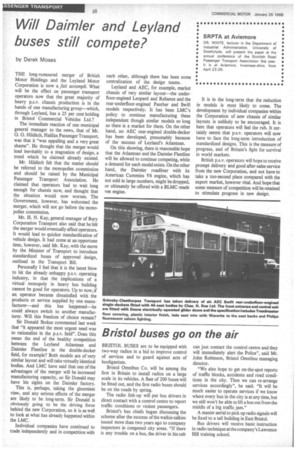Bristol buses go on the air
Page 32

If you've noticed an error in this article please click here to report it so we can fix it.
BRISTOL BUSES are to be equipped with two-way radios in a bid to improve control of services and to guard against acts of hooliganism.
Bristol Omnibus Co. will be among the first in Britain to install radios on a large scale in its vehicles. A fleet of 200 buses will be fitted out, and the first radio buses should be on the roads by spring.
The radio link-up will put bus drivers in direct contact with a control centre to report traffic conditions or violent passengers.
Bristol's bus chiefs began discussing the scheme after the success of the walkie-talkies issued more than two years ago to company inspectors in congested city areas. "If there is any trouble on a bus, the driver in his cab can just contact the control centre and they will immediately alert the Police", said Mr. John Robinson, Bristol Omnibus managing director.
"We also hope to get on-the-spot reports of traffic blocks, accidents and road conditions in the city. Then we can re-arrange services accordingly", he said. "It will be much easier to operate services if we know where every bus in the city is at anytime, but we still won't be able to lift a bus out from the middle of a big traffic jam."
A master aerial to pick up radio signals will be fixed to a tall building in East Bristol.
Bus drivers will receive basic instruction in radio technique at the company's Lawrence Hill training school.












































































































